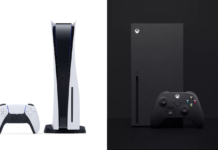 Dave Perry, industry veteran known best for his work at Shiny Entertainment (on such games as Enter the Matrix and Earthworm Jim), gave a keynote at the Games Convention in Leipzig, Germany, where he discussed the industry and the amount of money lost by console manufacturers, thanks to statistics from DFC Research.
Dave Perry, industry veteran known best for his work at Shiny Entertainment (on such games as Enter the Matrix and Earthworm Jim), gave a keynote at the Games Convention in Leipzig, Germany, where he discussed the industry and the amount of money lost by console manufacturers, thanks to statistics from DFC Research.
Of course, videogame manufacturers typically follow the Gillette razor blade model and sell their hardware at a loss (at least for the first few years) only to recoup the costs on software. (Nintendo’s Wii is an exception — it’s estimated that even out of the gate Nintendo has already been making $40 per console). But Sony’s PS2, the best selling videogame console of all time, was making a healthy profit on each unit sold as of a few years ago. Seemingly all of that went to fund the PS3 hardware that Sony has been selling — and for the foreseeable future will continue to sell — at a loss. (Some estimates at one point put it at $260 per console, though manufacturing costs have steadily come down in the past year).
Perry didn’t use this point to take any particular stance on this console race — though he did state that DFC Intelligence puts the Wii as the victor this generation, with the PS3 coming in first in terms of overall software sales — but he did want to point out the extreme investment Sony is making in its hardware this generation. He (and DFC) predict Sony will extend this generation even longer than the PS2’s because of this (making Sony’s claims of 10-year life cycle a real possibility). Of course, the Xbox 360, especially considering its $1 billion in replacement costs for faulty hardware, has likely cost Microsoft just as much, if not more. But Microsoft’s entire foray into the videogame business has been a costly multi-billion dollar investment (Microsoft lost $4 billion on its original Xbox alone), whereas Sony’s games division has only recently been forced to spend so heavily to hold on to its status in the games market (and to force the adoption of an HD media standard). — 1up.com
It is not a phenomenon unique to this generation, however; Microsoft sank $4 billion into the original Xbox, while Sony’s superstar PlayStation 2 cost the company quite a bit of money in its first few years. But with Sony playing for a ten-year lifecycle, they may yet break even when all is said and done.
That is, until the bills come in for the PlayStation 4.










